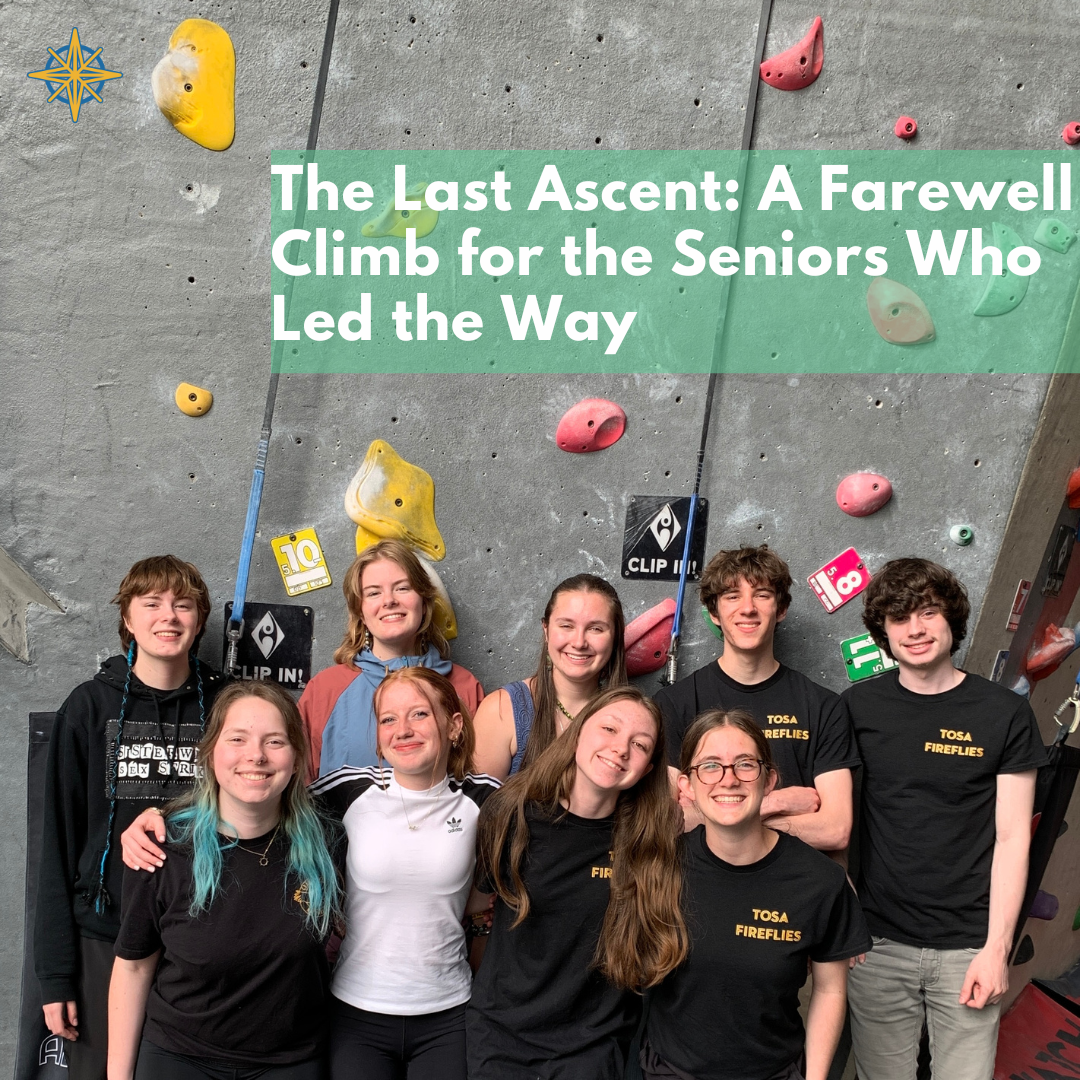AP Seminar: The Key to Increasing Life Expectancy in the US
April 9, 2021
Below is Ava Beisenstein’s final research paper for AP Seminar in the 19-20 school year. The AP board’s prompt for this paper was “happiness”. “This paper took, what felt like, countless hours. My class had begun our final papers in class when the pandemic struck. Motivating ourselves to finish our research and write our papers was harder than I expected, but I’m proud of what I was able to accomplish.” Read about the low life expectancy in the United States, contributing factors, and possible solutions below.
The Key to Increasing Life Expectancy in the US
Despite being one of the most powerful, industrialized, and developed nations in the world,
the United States falls far behind other countries in life expectancy from birth – a key indicator of
the health of a nation. The Dalai Lama explains in an interview with author Douglas Abrams and
Archbishop Desmind Tutu, that lasting happiness comes from close relationships and describes that
many Americans’ expectations of immediate results can make slowing down for significant
connections unnecessarily hard (Lama, et al). Studies show that lasting happiness and satisfaction
improves long term health outcomes, and without these significant relationships Americans are
missing out on long and happy lives.
According to the Centers for Disease Control, after four years of unprecedented decline,
the US saw the first rise in life expectancy in 2018 to 78.6 years, just one month more than the
previous year (Arias, et al). Despite this increase, the US still remains years behind other developed
nations. In fact, the United Health Foundation shows America over half a decade behind the
country with the highest average life expectancy, Japan’s 84.2 years (America’s Health Rankings).
The annual Human Development Report from the United Nations, which measures inequalities in
development and policy across the world, shows the US trailing developing nations as well, such
as Cuba and Lebanon (Human…). The last time US life expectancy was remotely similar to
comparable countries was nearly forty years ago, reports the Health System Tracker, an
organization that monitors US health trends (Gonzales, et al). Since then the US has gained only
4.9 years, half of the gains other nations accomplished in the same time period. The low life
expectancy is something that all Americans, no matter gender, race, or socioeconomic class, are
harmed by, and is a problem that other countries are showing is preventable. The US can best
increase the average life expectancy by examining and replicating policies and practices used in
communities with the world’s highest life expectancy, such as promoting long term happiness and
encouraging healthy lifestyles through city planning.
The key in understanding this complex issue is examining the most significant factors that
affect a change in US life expectancy. The CDC identified the opioid epidemic, rising suicides, and
high obesity rates as contributing factors (Hedegaard 1, et al). Drug overdose deaths from opioids
increased by 45% from 2016 to 2017, and suicide has been the tenth leading cause of death for
Americans since 2008 (Hedegaard 2, et al). Not to mention, of the 36 member countries of the
Organization for Economic Co-operation and Development (OECD), which includes the most
developed nations in the world, the US ranks first in obesity prevalence at 31% of adults.
Shockingly, even Colorado, the state with the lowest obesity prevalence at 23%, still ranks third
compared to other OECD nations (America’s Health Rankings). Simply put, the decrease in rates
of opioid related deaths, suicides, and obesity related conditions have not kept pace with other
developed nations. One of the simplest, yet often overlooked, answers to America’s health crisis is
the fact that many turn to suicide and opioids to escape the present and their lack of meaningful
relationships with others.
The first step to see a rise in US life expectancy is to recognize that countries with the
highest life expectancy promote long term happiness in a much more effective and efficient way.
Many religions and cultures teach the difference from momentary happiness and lasting
satisfaction. The Dalai Lama explains that lasting happiness comes from feelings of “love,
compassion, and generosity”, rather than the temporary pleasure that comes from the senses (Lama,
et al). He illustrates that “A believer develops this deeper level of joy through faith in God, which
brings inner strength, inner peace”, but mentions that nonbelievers and nontheists, like himself, can
also achieve lasting joy (Lama, et al). Abrams goes on to remind readers that hedonism, or the
notion that pleasure is the only component of joy and wellbeing, is often “the default philosophy of
most people” (Lama, et al). This explains many Americans’ obsession with capitalism, and even
drugs and alcohol, and the instant gratification that comes with it. For example, the need for
convenient fast food instead of cooking a healthy meal – something prominent in American culture
that contributes to obesity and disease rates. It can be difficult to change the way people think, and
a limit to consider would be those who refuse to change their habits. However, by reaching long
term satisfaction, whether through religion or not, Americans can shed the belief that momentary
satisfaction is the most important ideal and discourage these harmful alternatives.
Not to mention, studies have shown that optimism, another trait associated with lasting
happiness, comes with a host of health benefits. A 2015 study that followed 2,000 Americans for
two years found that those with a positive outlook were half as likely to die prematurely and were
protected against a physical decline in old age (Ostir, et al). A recent CNN article which
summarizes a number of studies focused on the effects of happiness on old age, reports that studies
in San Francisco, England, and France confirm these findings (LaMotte). Some even suggest that
those with a positive outlook have stronger immune systems, by proving the positive effects
optimism has on lowering levels of inflammation and endothelial dysfunction (Ikeda, et al). These
studies further the notion that optimism has a positive effect on health, and the lack thereof can
even be dangerous.
Further proof of the idea that lasting happiness brings good health can be found in the five
“blue zones” across the globe. Blue zones are communities that have the highest life expectancy at
birth in the world. The team of researchers that identified the original blue zones identified nine
characteristics the communities share that lead to long life. One of the nine is a sense of purpose,
something they believe leads to lasting joy and reduced stress (Buettner, et al). The blue zone with
the highest concentration of centenarians is Okinawa, Japan. Here, many residents tribute their
long life to their positive outlook, or “ikigai”, which translates to “reason to live”. Finding a life
purpose in old age doesn’t have to be world changing. Some centenarians in Okinawa cite their
ikigai as fishing for their family, holding their great-great-great-granddaughter, or teaching martial
arts (Mogi). Another blue zone, the Nicoya Peninsula in Costa Rica, also has a word for finding
one’s life purpose, “plan de vida”. Researchers found that having a reason to wake up every
morning is an important factor in living longer and is shared across all blue zones (Buettner, et al).
According to blue zone researcher, Dan Buettner, other centenarians in Okinawa are part of small
social support groups called “moai” (Buettner, et al). These tight knit communities are found across
blue zones everywhere, and further support the Dalai Lama’s notion of finding lasting happiness
through compassion and generosity. The only blue zone in the US, Loma Linda, CA, has one of
the highest concentrations of Seventh-day Adventists in the world, and residents here live up to ten
years longer than the average American (LaMotte). The strict religion prizes community service
and volunteering, something that brings communities together and creates a sense of purpose. The
Dalai Lama and Archbishop agree that the fastest way to this state of wellbeing is through “our
relationships, and specifically, our expression of love and generosity to others…” (Lama, et al).
Having strong social support groups and finding meaning in life is proven to promote a lasting
happiness and feelings of optimism which increases individuals’ health and life expectancy.
Encouraging individuals to focus on long term happiness instead of temporary pleasures, whether
through religion, close friend groups, purpose, and more, is essential in increasing life expectancy
in a natural and healthy way.
The second step to raise the life expectancy in the US is to encourage a healthy lifestyle
through city planning that mirrors blue zone communities and nations with higher life expectancies.
Experts like Dr. Ruairi Robertson agree that only 20-30% of longevity is determined by an
individual’s genetics, showing that lifestyle and environment have a much bigger impact than
previously believed (Robertson). This suggests that anyone can increase their lifespan by making
simple changes. A study that focused specifically on why the US has a shorter life expectancy than
other developed nations suggest that “aspects of the built physical environment”, such as access to
parks, recreation, and healthy food choices, “underlie cross-national variations in healthy behavior
and associated health outcomes” (Avendano, et al). The study points out that the US offers very
limited opportunities for physical activity and few alternatives to driving, when compared to the
vast public transportation other developed countries benefit from. Another obvious factor is the
effects food deserts have on impoverished communities across America. Without the ability to
access quality food in a community, residents become reliant on fast food restaurants and unhealthy
alternatives. For example, individuals who live within a half mile of six or more fast food
restaurants are 40% more likely to be obese than individuals near less than three restaurants
(Buettner, et al). This shows that individuals shouldn’t be held accountable for unhealthy habits
when it is the easiest option available to them. Instead, action must be taken to make the healthy
choice the easiest choice.
The leader of the original team of blue zone researchers, Dan Buettner, confirms this
theory and has recently targeted communities in the US to raise their life expectancy through the
“Blue Zone Project” by implementing the common factors blue zones share. His original study
recognized that “putting the responsibility of curating a healthy environment on an individual does
not work” (Buettner, et al). This is a clear pattern many Americans relate to, as 90% of individuals
give up in the first seven months of a diet, and after just two years of a gym membership “the
number of attendees will have dropped by 70%” (Buettner et al). The best way to encourage
healthy lifestyles is through working with lawmakers, local businesses and restaurants, and more to
make healthy options available to everyone. Some US state governments attempt this by making
healthy food tax free, such as fresh produce and dairy. However this is not enough to make a
lasting impact. The first pilot community the Blue Zone Project worked with was a town of 9,000
in Minnesota. Through working with town leaders and residents the project convinced the town to
create a walking path around their lake and connecting sidewalks, instead of widening their Main
Street and raising the speed limit. The project worked with restaurants, grocery stores, and even
schools, requiring restaurants to offer three plant-based meals and switching the default side dish
from fries to fruit. Grocery stores now display healthy food and beverages instead of candy and
snacks at the checkout. After only a year and a half the town’s life expectancy increased by 3.2
years, residents lost a combined 7280 lbs., and healthcare costs dropped by 40% (Buettner, et al).
After the success in a small town, Blue Zone Project moved on to bigger communities such as Fort
Worth, TX, and the coastal cities of Los Angeles where similar results occurred. The Blue Zone
Project proves that implementing infrastructure such as clean parks and sidewalks, and making
small changes that unconsciously push residents to make healthier choices, will increase life
expectancy. An obstacle to overcome in this plan is examining the challenges of healthy
infrastructure in America’s biggest cities and in communities that don’t have money and resources
to dedicate to this. It would be crucial to ensure that low income communities and communities of
color are not left out. The positive effect health encouraging environments have on residents, both
in Blue Zone project communities in the US and nations with higher life expectancies worldwide,
is evident. It is clear that the best investment in public health is policy that models environments
and infrastructure that make it easy for people to live healthy lives.
Nevertheless, critics may argue that the US has lower life outcomes simply because the
healthcare system in the US isn’t as advanced as other developed nations, or that Americans aren’t
prepared to take the steps needed for a healthy lifestyle. The five original blue zones show that a
robust healthcare system is helpful in increasing life expectancy, but not always necessary. One of
the first blue zones, the Nicoya Peninsula, spends only 15% of what Americans do on healthcare,
yet are far healthier and more likely to reach the age of 90 (Buettner, et al). Not to mention, making
the leap to reforming a healthcare system as vast as the US’s is a daunting task, which is why
taking small steps like encouraging long term joy and sustainable infrastructure at a smaller level is
a crucial step forward for the US.
For far too long America has fallen behind fellow developed nations in terms of life
expectancy, and examining why other nations are so successful is long overdue. Simply by
promoting long term contentment over momentary joy, citizens will strengthen their immune
system and improve their health outcome. By mirroring blue zones across the world and
redesigning communities to better encourage healthy lifestyles, the US will increase life expectancy
like never before. With the full support of localities, governments, and communities, Americans are
ready and willing to grow old together with the rest of the world.
Works Cited
“Annual Report 2019.” America’s Health Rankings, United Health Foundation, Dec. 2019,
assets.americashealthrankings.org/app/uploads/ahr_2019annualreport.pdf.
Avendano, Mauricio, and Ichiro Kawachi. “Why Do Americans Have Shorter Life Expectancy
and Worse Health Than Do People in Other High-Income Countries?” The Annual Review
of Public Health , Jan. 2014, doi:10.1146/annurev-publhealth-032013-182411.
Buettner, Dan, and Sam Skemp. “Blue Zones: Lessons From the World’s Longest Lives.”
American Journal of Lifestyle Medicine, vol. 10, no. 5, 2016, pp. 318–321.,
doi:10.1177/1559827616637066.
Dalai Lama and Desmond Tutu. “Have You Renounced Pleasure?” The Book of Joy:
Lasting Happiness in a Changing World, by His Holiness Dalai Lama and
Desmond Tutu, Penguin Random House, 2016, pp. 51–57.
Gonzales, Selena, et al. “How Does U.S. Life Expectancy Compare to Other Countries?”
Peterson-Kaiser Health System Tracker, Peterson-KFF Health System Tracker, 23 Dec.
2019,
www.healthsystemtracker.org/chart-collection/u-s-life-expectancy-compare-countries/#item-st
art.
Hedegaard 1, Holly, et al. “Drug Overdose Deaths in the United State, 1999-2017.” Centers for
Disease Control and Prevention , Centers for Disease Control and Prevention, 29 Nov. 2018,
www.cdc.gov/nchs/products/databriefs/db329.htm.
Hedegaard 2, Holly, et al. “Suicide Mortality in the United States, 1999-2017.” Centers for
Disease Control and Prevention , Centers for Disease Control and Prevention, 3 Oct. 2018,
www.cdc.gov/nchs/products/databriefs/db330.htm.
“Human Development Report 2019.” United Nations Development Programme Human
Development Reports, United Nations Development Programme, 2019,
hdr.undp.org/en/content/2019-human-development-index-ranking.
Ikeda, A., et al. “Optimism in Relation to Inflammation and Endothelial Dysfunction in Older
Men: the VA Normative Aging Study.” Psychosomatic Medicine, vol. 73, no. 8, Oct. 2011,
pp. 664–671., doi:10.1097/PSY.0b013e318231249.
LaMotte, Sandee. “Being Happier Will Help You Live Longer, so Learn How to Be Happier.”
CNN, Cable News Network, 5 Oct. 2019,
www.cnn.com/2019/09/30/health/happiness-live-longer-wellness/index.html.
Mogi, Ken. “This Japanese Secret to a Longer and Happier Life Is Gaining Attention from
Millions around the World.” CNBC, CNBC, 28 May 2019,
www.cnbc.com/2019/05/22/the-japanese-secret-to-a-longer-and-happier-life-is-gaining-attent
ion-from-millions.html.
Ostir, Glenn V., et al. “Emotional Well-Being Predicts Subsequent Functional Independence and
Survival.” Journal of the American Geriatrics Society, vol. 48, no. 5, 2000, pp. 473–478.,
doi:10.1111/j.1532-5415.2000.tb04991.x.
Robertson, Ruairi. “Why People in ‘Blue Zones’ Live Longer Than the Rest of the World.”
Healthline, Healthline Media, 29 Aug. 2017, www.healthline.com/nutrition/blue-zones.
Xu, Jiaquan, et al. “Mortality in the United States, 2018.” Centers for Disease Control and
Prevention , Centers for Disease Control and Prevention, 30 Jan. 2020,
www.cdc.gov/nchs/products/databriefs/db355.htm.













